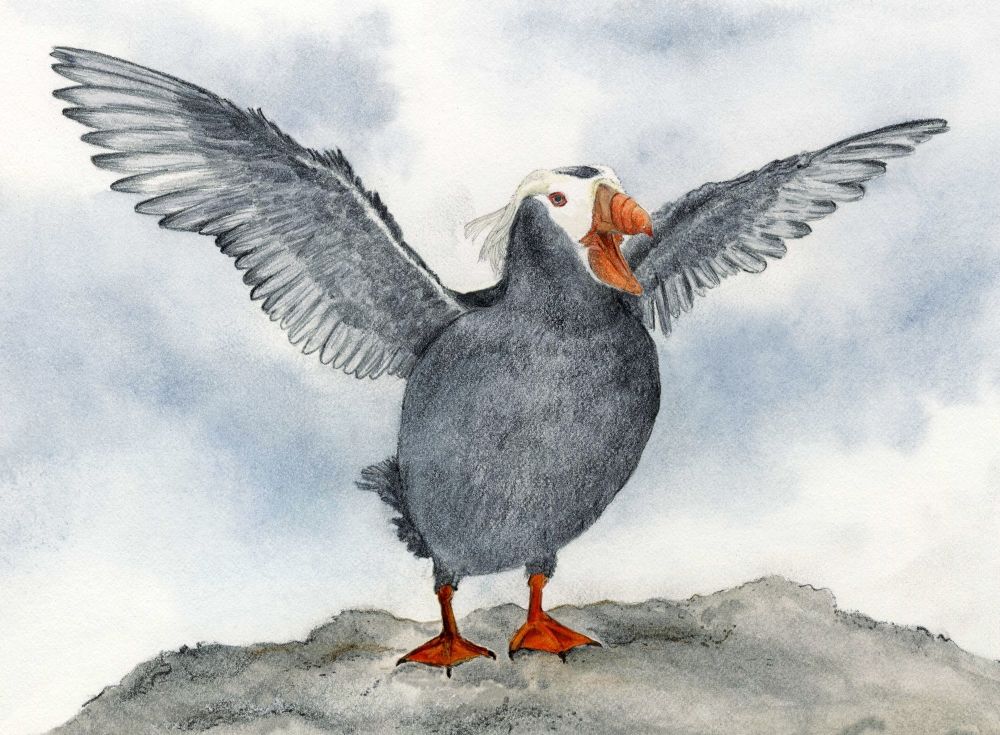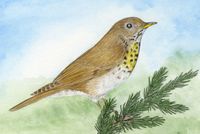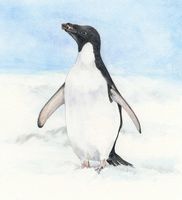
Tufted Puffin
Latin name: Fratercula Cirrhata,Conservsation status: vulnerable (population is decreasing)
Puffins dive as deep as 200 ft. for food, stay under water for more than a minute, and fly up to 40 mph.
Tufted Puffins are threatened by sea level rise and storm surges which destroy habitats and breeding areas. In some areas of North America warming seas are causing the fish that the Puffins feed on to migrate farther north, making it difficult for them to find adequate food. Other threats are entrapment in fishing nets, oil spills, pollution, ingestion of plastic, human disturbance of breeding colonies and introduced predators such as rats and foxes.
Other animals effected by climate change
 Bicknells Thrush
Bicknells ThrushThe breeding habitat of Bicknell's Thrush is primarily restricted to mountain spruce forests of Northeastern US and Canada. They winter in the Caribbean and spring migration north is cued by day length. If spring arrives early in the north and the Thrushes arrive at their normal time, the abundance of food—insects and fruit—would already have peaked. Warming temperatures also produce an abundance of spruce and fir cones—feeding and increasing the population of Red Squirrels, a main predator of eggs and chicks. Storms and hurricanes threaten the Thrush's tropical winter habitat. Pollution, logging and deforestation threaten their spring breeding and winter habitats.
 Adelie Penguin
Adelie PenguinIn winter, the sun doesn't rise south of the Antarctic Circle. If Antarctic sea ice decreases and does not extend far enough to the north, Adélie Penguins, during their winter migration, may not be able to reach the sunlight needed to navigate, hunt and avoid predators—they won't dive in the dark. Other threats are oil pollution, fishing and disturbance of colonies from research stations and aircraft.
 Rusty Patched Bumble Bee
Rusty Patched Bumble BeeThe Rusty Patched is the first bee to be listed as endangered in the US. Populations have declined as much as 87% from habitat loss, disease and pesticides. Climate threats include: warming and precipitation, early snow, late frost and drought. Bees and butterflies are important agricultural pollinators. In 2016, 40% of invertebrate pollinators (bees and butterflies) were listed as threatened with extinction.
 Ivory Gull
Ivory GullIvory Gulls are almost entirely dependent on sea ice and glaciers for nesting and food foraging. They feed on fish and shellfish that thrive near the edge of the ice, and on the remains of seals left by Polar Bears. Seal blubber is a source of heavy contaminants—Ivory Gull eggs show a higher concentration of mercury and pesticides than any Arctic sea bird. Other threats are illegal hunting and disturbance from diamond mining in the Canadian Arctic.
